-

History of pho and the stereotype of women cooking in the kitchen
-
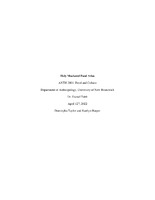
A podcast about popular foods in New Brunswick. Focusing on the personal, social, environmental, economic, and historical impacts these foods have on NB.
-

This is a short story where a reader will get to experience a heavy storm about to hit a rural peasant and his families farmland and how crucial this farmland plays a role in feeding these families.
-
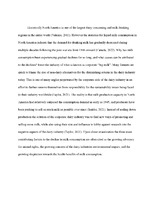
Why do we even drink milk? The answer lays behind the white lies of the corporations that own the colourful and wholesome looking dairy brands available on the shelves of nearly every supermarket in the world.
-
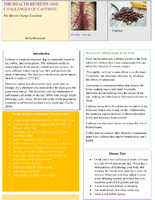
this is a brochure of health and benefits of coffee, a long with other informtation on the drug found from my sources.
-

Italians used what was available to them to alter their original recipes when they first immigrated to Canada.
-

My project consists of an in depth analysis on how carbohydrates can improve an athletes athletic performance. With this, my project concludes that since pasta is high in carbohydrates, it is the perfect meal for athlete's to incorporate into their diet for peak athletic performance.
-
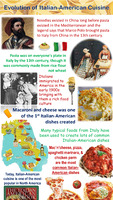
Infographic depicting the evolution of Italian-American cuisine and Italy’s influence in the United States of America with a short essay.
-

a brief overview of the evolution of the Trench ration of the Great war through to the Modern Military Meal Ready To Eat that we see in the modern times.
-
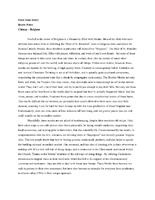
Catholic Monks all over Belgium are known for brewing some of the best beer in the world. Although fraudulent breweries have popped up, making knock-off versions of their beer, these Monks manage to stay afloat and modernize, by following centuries-old rules about local, sustainable economies.
-

It discusses the rationality of North American men trying to use the "heat" from chili peppers as a way of proving their masculinity while in Bhutan, it is consumed for the flavor it adds to food and its significance to the cuisine.
-

Maple syrup production in Canada is in danger to to factors like climate change and deforestation! In order to protect this sweet treat we need to make a plan for the future!
-

The southeastern coast of Nova Scotia is home to many Acadian communities, all holding much pride in their culture. Rappie pie, also known as râpure, is a simple dish made up of potatoes, onion and chicken that has been a part of the Acadian culture for generations. The recipe dates to the first Acadians who settled along the coast of Nova Scotia following the Deportation of 1755. Since then, the rappie pie has played an important role in bringing Acadian families and communities closer.
-

My Food Atlas entry discusses how whale hunting is essential to the Inuit people and their culture, as they depend on whale hunting for their survival in northern Canada.
-

Puer tea and its ability to create and break social bonds within a community.
-

Moose are an important source of food on the island of Newfoundland, but they are overpopulating the island and destroying the environment. In this project, I describe the problem of moose overpopulation and solutions to combat this.
-

Climate change brings with it, increased temperature, increased drought, and changes in rain patterns. These will all affect the coffee production in Nicaragua in different ways but overall making their coffee worth next to nothing. Not only will it affect the coffee production, it will also affect the Nicaraguan economy and the household economies of farmers.
-

A study into the history of barley in the region of Tibet, and how it shaped Tibetan history from 3600 years ago into the present day.
-

For my research project, I conducted 6 interviews and talked to Indigenous knowledge holders about Indigenous (traditional) foods, medicine, and culture.
-

This project comes in a brochure form. It is aimed towards parents who have a adolescent child(ren). This brochure is to help parents understand the importance of being there for your children when they are eating, what you serve them, and some reasonings as to why some parents do not feed their children home cooked meals. It talks about how being there for your children (during meal times) helps improve their behaviors in many different aspects. It also shares some statistics about family meals that were taken from a survey that EAT completed.
-

Maize tortillas are a staple food to the Mexican cuisine. Traditionally they are made by a process called nixtamalization with the only three ingredients being maize, water, and limestone; this process is changing as different ingredients are being added.
-

What, when, and how people eat and drink is primarily influenced by their biological needs. Nevertheless, as economies develop and the food supply also becomes abundant, how people eat is linked not only with physiology but also with the customs, aspirations, and expectations of their societies. This paper leads readers to a beautiful country in the East called Vietnam and to see how their table manners are shaped by their culture and vice versa.
-

A brief dive into the depths of matcha tea ceremonies, including its history, pre-ritual necessities, the ceremony itself, and why it is an important and spiritual experience for Japanese people.
-

Sushi had humble beginnings in the sushi shops of the Edo period. From boisterous chefs to barehanded preparation, sushi was the symbol of manliness in Japan. Once in North America, these notions were replaced with concepts of fame and fortune. The following entry discusses this change in perspective between cultures.
-
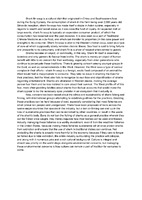
Shark fin soup is an integral part of Chinese and Southeastern Asian culture, being a part of both social and medicinal practices. The consumption of shark fin is beneficial to the consumer and acts as a mark of wealth, status, and respect. However, fisheries are poorly managed leading to the near extinction of many species of shark. It is an unsustainable practice currently being managed by bans that do not actually do much to benefit sustainability. Money needs to be put towards making fisheries sustainable in order to ensure the long-term survival of the economy and the culture.
























